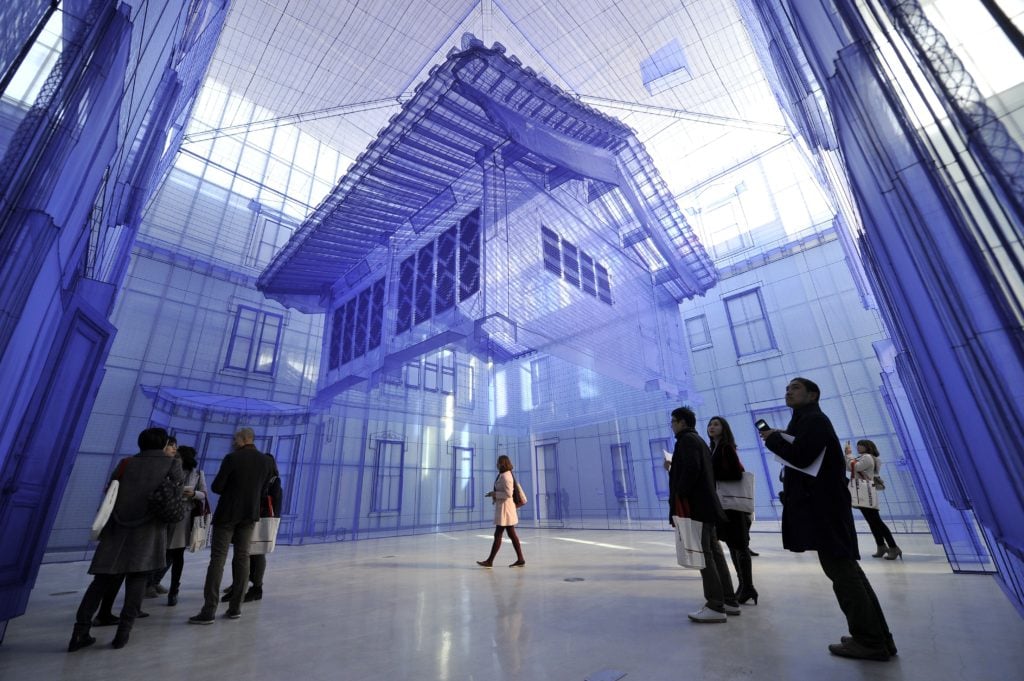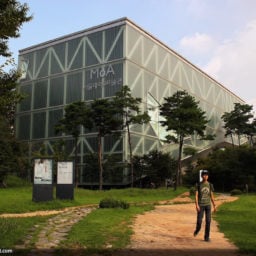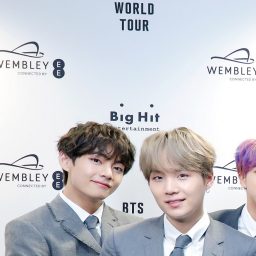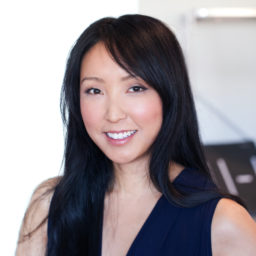Perhaps there has never been more crossover between the US and South Korean art scenes than there is right now. This week, Gallery Hyundai opened a showroom—or “culture hub,” as its owner, Do Hyung-Teh, calls it—in New York City. The new space is part of a strategic effort to “get more of our artists together with international curators and collectors,” Doh says. “I really want to collaborate with more New York galleries to get these wonderful artists in their galleries.”
At the same time, Western galleries are setting up shop in South Korea in unprecedented numbers. The international mega-gallery Perrotin opened in Seoul in 2017, while Lehmann Maupin has taken up residence in a space designed by the artist Lee Bul, who jumped ship from Kukje Gallery to join its roster a few years back. Pace gallery, too, has gotten in on the action, opening a semi-hidden space in the trendy, foreigner-friendly neighborhood of Itaewon back in March 2017.
And it’s not just blue-chip dealers coming to Korea. The pioneering Los Angeles gallery Various Small Fires just opened its doors in Seoul, too. “The thing with Korea is there’s K-pop, K-beauty, K-drama,” says gallery owner Esther Varet Kim. “For people in Asia, Seoul has become such a huge cultural stop. People in Malaysia go to Seoul like it’s Paris. It’s very logical that the galleries, especially the bigger blue-chip ones, are setting up spaces here in Seoul. It’s for those that are savvy and don’t read Asia as one big blob.”
The result is that South Koreans have flooded the international contemporary art scene, sweeping surveys, biennials, and art fairs. Names such as Lee Bul, Anicka Yi, Lee Ufan, Kimsooja, Kang-so Lee, Haegue Yang, Kim Jong-ik, Suki Seokyeong Kang, Minjung Kim, and, of course, Nam June Paik (who’s the subject of a massive show at Tate Modern in October 2019 that will then travel to the San Francisco Museum of Modern Art in 2021) have become ubiquitous.
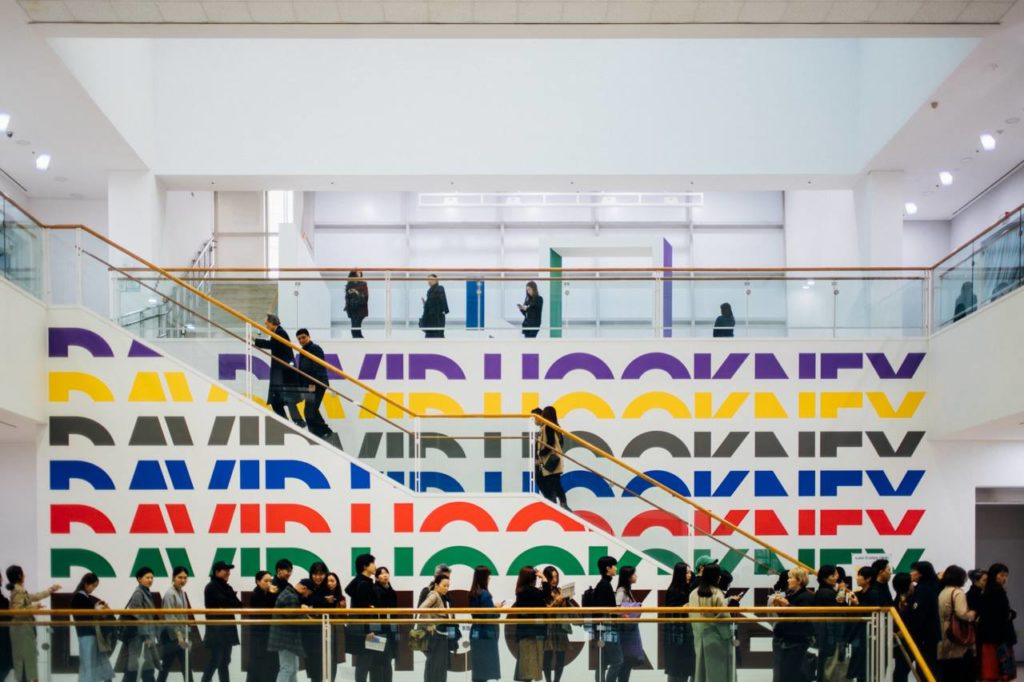
The opening day of “David Hockney” at the Seoul Art Museum. Courtesy of SeAM.
A Particular Cultural Cachet
I’ve repeatedly been told that in South Korea, especially in Seoul, cultural knowledge—and specifically art—is an important social value. “The taxi drivers will talk to you about the latest shows at museums. Everyone cares about being informed and being cultured,” an associate at one of Seoul’s top international galleries told me in confidence—a common request, by the way, in this relatively intimate scene where the frequently traded gossip is often tempered with an emphatic “off the record!”
But don’t listen to me, listen to the numbers: In March, the David Hockney show at the Seoul Museum of Art amassed a crowd of 40,000 in just its first four days. Other exhibitions at the museum regularly see about 500,000 to 600,000 visitors over the course of their runs.
Another oft-repeated fact in Seoul’s art scene is that South Korea has the highest number of collectors per capita in Asia. That statistic is illustrated by pointing to its many private corporate museums, such as the recently revived Leeum Samsung and the new Chipperfield concrete palace AmorePacific Museum of Art, as well as a few yet-to-be-announced conglomerates that are building facilities to showcase their art collections. There are also more than 450 galleries registered in the Gallery Association of Korea.
“Seoul has been really well developed in the art scene and market,” says Do of Gallery Hyundai. “But I can also tell you as well that Korean contemporary art has been really intellectually developed, too.”
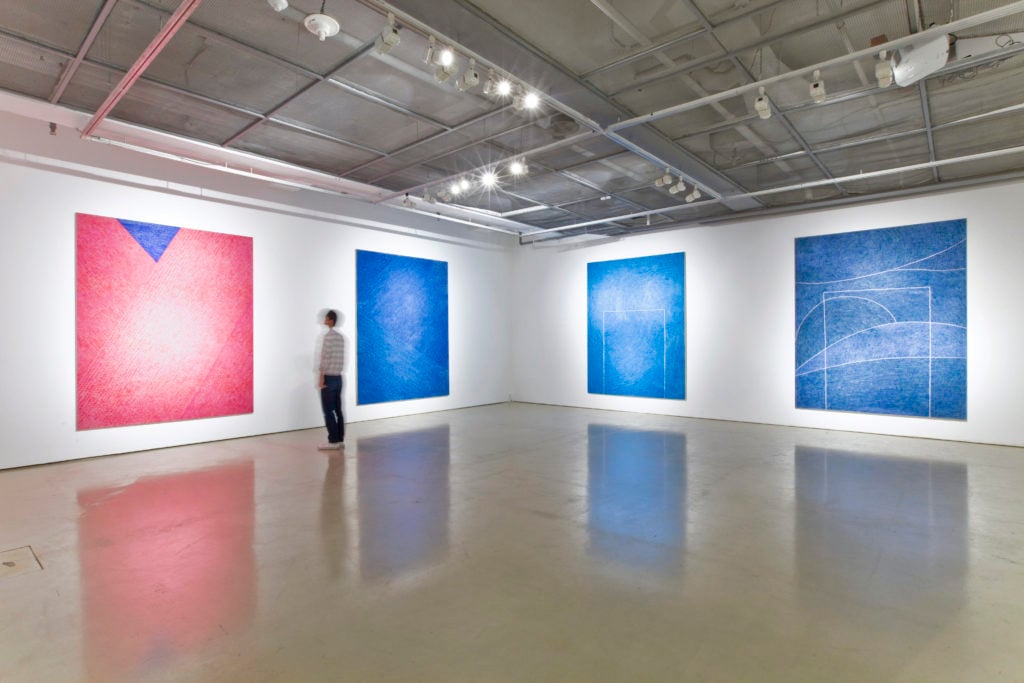
A Changing of the Guard
South Korea’s recent cachet in the art market is usually connected to “Dansaekhwa,” the Modernist meditative art movement that has swept through galleries and auction houses over much of the last four to five years. But even as Dansaekhwa went blue chip, with foreign galleries like Blum & Poe and Lévy Gorvy making market darlings out of Shin Sung-hy and Chung Sang-Hwa, there’s been a brewing feeling within the hometown galleries that their contemporary artists needed more market and institutional support.
South Korea is a relatively young and small country. Its independence dates to 1947, but it wasn’t until 1988, the year it hosted the Olympics, that the country “opened up” to foreign economic transactions. Since then, the art market has been focused both importing Western works with high international market values and on serving as a conduit to get money out of the country.
“Previously there wasn’t a market to support anyone besides Dansaekhwa [in South Korea] and really prominent artists have somehow been left behind in the gallery system in their own country,” says Kim of Various Small Fires.
“We have a number of great artist who are going up, up, up, up and are really well received in United States and Europe,” says Do of Hyundai. “But actually my personal view is we need one or two stars.” (Mind you, this is the dealer who managed Nam June Paik’s estate and Lee Ufan’s career for 25 years.)
“The older generation collected Korean artists,” says Emma Son, a director at Lehmann Maupin Seoul. “Our mission is to show artists never before seen in Korea.” This cross-cultural exchange between the United States, and the West more broadly, and South Korea is actually quite unique, and about more than just galleries crossing the Pacific.
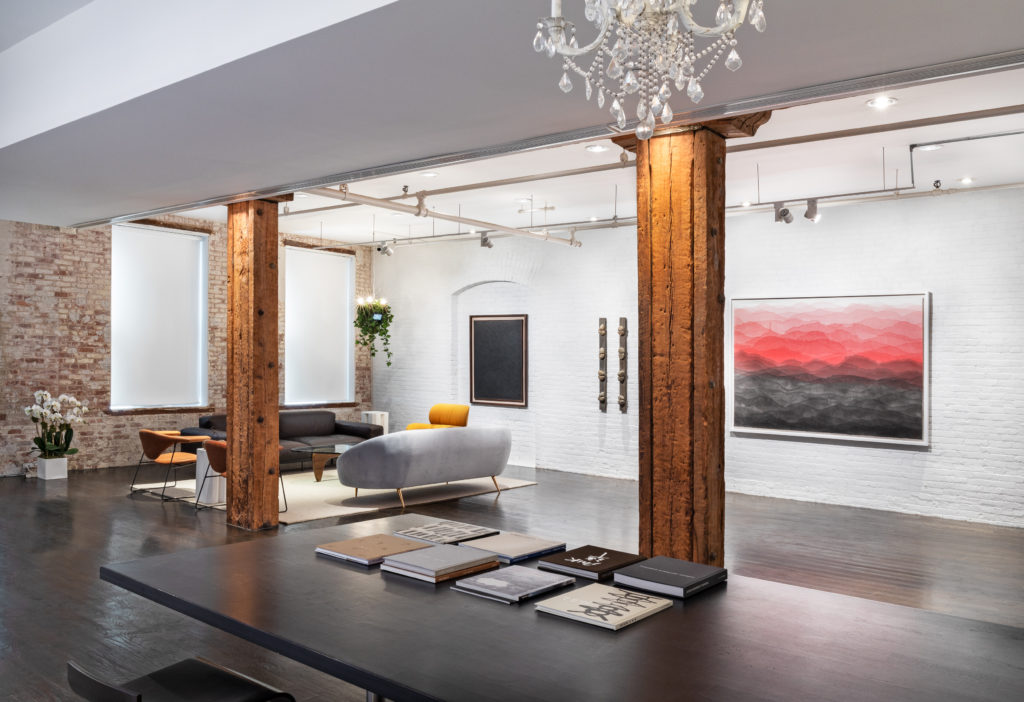
Installation view of Gallery Hyundai’s New York Showroom, courtesy of Gallery Hyundai.
The Korean Difference
Korea’s market landscape is quite different from auction-heavy Hong Kong or boom ‘n’ bust mainland China or even Japan, which is still haunted by the tanking of its art market in the 1980s. As one Korean gallerist told me (in confidence of course), “The Japanese, they put everything in the bank. They don’t really invest in art because they’re scared.”
Although South Korea is best known internationally for its cosmetics and cars (fun fact: Hyundai means “modern” and Hyundai Gallery has no relationship to the car company), both private enterprises and the public sector have identified art as an avenue to build wealth. This is evident on any stroll through Samcheong, the neighborhood alongside the presidential residence of the Blue House. In this cluster, where real estate costs more than $1,000 per yard, sit the campuses of Gallery Hyundai and Kukje Gallery, the two largest blue-chip galleries here, as well as local leaders like One & J, PKM Gallery, and Arario.
But there’s also an international opportunity for emerging galleries to create cross-cultural exchange. As Kim from Various Small Fires says, “We can provide a slightly different platform or a different perspective on how Korea can value its own artists and how we can create new audiences for the emerging Korean art scene.”
Seoul also has a thriving homegrown emerging scene, best found in galleries like Whistle and Art Delight, both in Hannam, near Various Small Fires, where scruffy hipsters sipping mini-cups of Chardonnay can be found at openings. “We all know each other,” says Kim. “It’s been pretty easy doing programming here because we’re all connected and friends. We’re all searching to be part of the conversation in another direction and expand and globalize our experience.”
